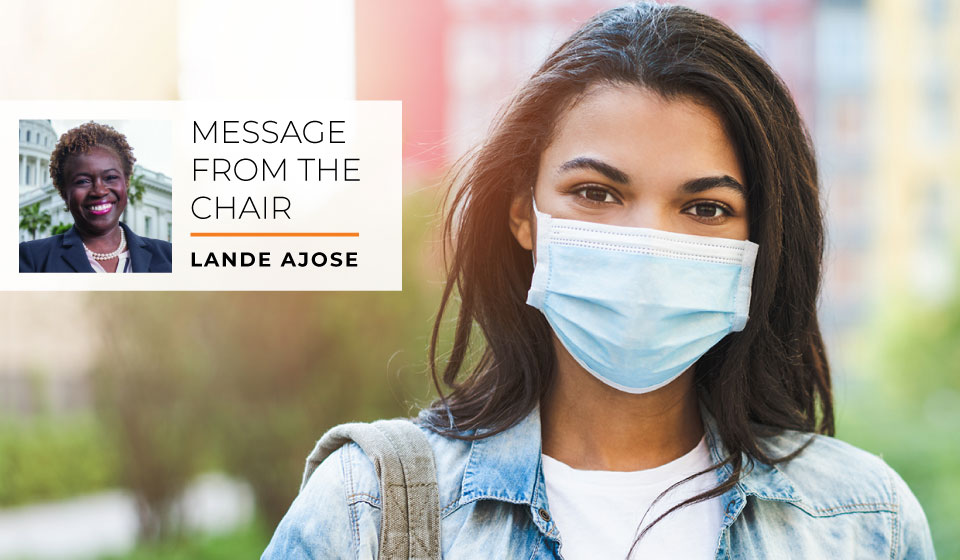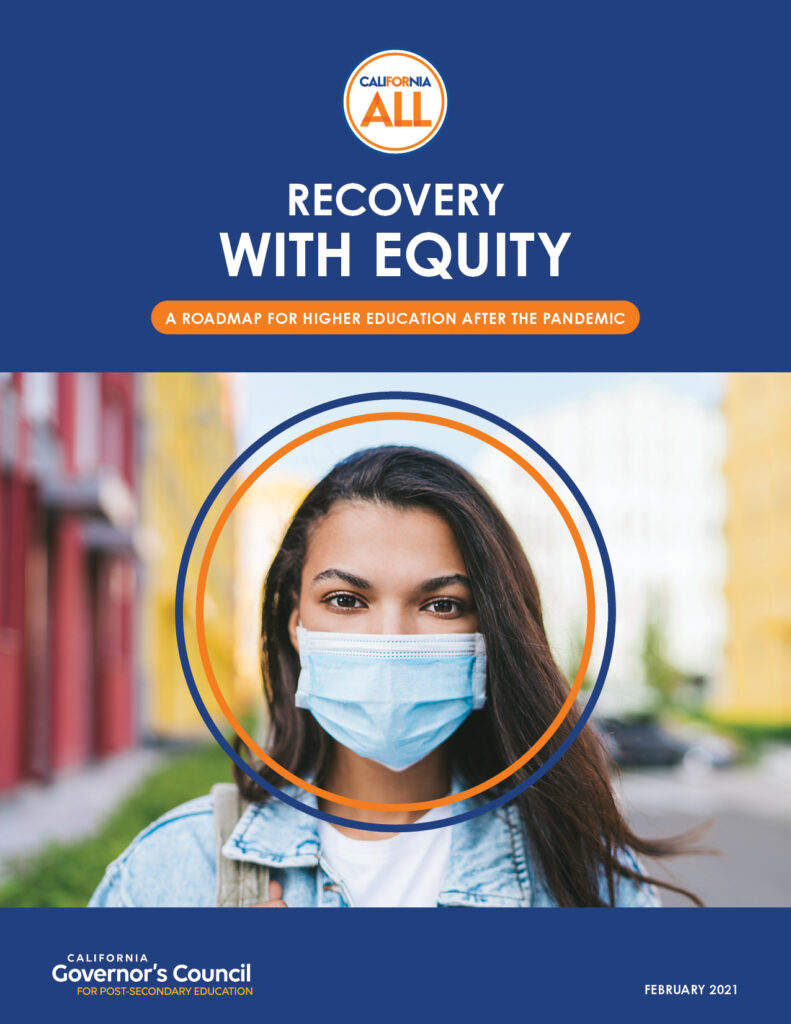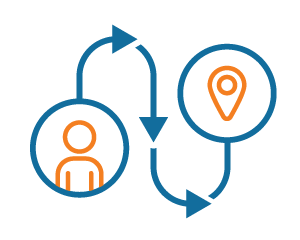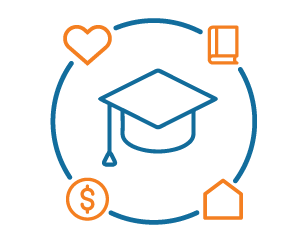California for ALL Calls Us to Reach Higher

Student success in higher education is critical to the health and well-being of our state. But like most of California, nearly every aspect of post-secondary teaching, learning, and campus life has been interrupted by the twin crises of the global pandemic and economic recession.
Because student success is inextricably tied to the future of California, we need to ensure that California’s systems of higher learning fully recover and thrive. As we plan for this eventual recovery, our students must remain our number one priority.
These crises have intensified long-standing inequities across California, including deep disparities by region, age, race, and ethnicity in employment and in higher education. Too many California students face structural barriers that limit their opportunity to earn a college degree. Historic inequities make these obstacles steeper for students who are Black, Latinx, Asian Pacific Islander, or Indigenous. The pandemic has magnified stresses for students, leading some to stop out, drop out, and underperform, as internet access, mental health and other challenges became more acute. As a result, far too many are not realizing their goal of earning a degree, at the very time that California needs a skilled and talented workforce to meet evolving labor market demands.
To fulfill the vision of California for All we can and must do better.
For this reason, the Recovery with Equity Taskforce was convened. The state and national experts in higher education and innovation serving on this body were asked to recast today’s challenges as an opportunity to help California’s economy recover with a post-secondary ecosystem that is more equitable, more resilient, and more coordinated. Grounded in the conviction that equity in higher education is essential to a stronger California for All, the Taskforce set out to help California’s post-secondary institutions emerge from the pandemic stronger and better poised to serve all students.

With input from a broad swath of students and K–12 and post-secondary educators, as well as leaders in civic organizations, local governments, nonprofits, and workforce development, the Taskforce produced Recovery with Equity: A Roadmap for Higher Education After the Pandemic.
This report seeks to address structural issues that have needed attention for a long time, and the realities students and institutions will face on the other side of the pandemic, including what it will take to re-engage those students who have sidelined their academic and career ambitions amid extraordinary stress.
The Taskforce identified recommendations to advance four guiding principles:

Fostering Inclusive Institutions: Institutional cultures and approaches to teaching and learning that work for all learners, especially those left behind

Streamlining Pathways to Degrees: Integrated statewide system for admission and transfer to provide clear, easy-to-navigate pathways to degrees.

Facilitating Student Transitions: High-touch, high-tech guidance and improved academic preparation for college access and success.

Simplifying Supports for Student Stability: Resources and structures packaged and simplified to help students meet basic, digital, and financial aid needs.
The recommendations supporting each of these principles are interconnected and together provide a roadmap for California’s education systems, policymakers, business leaders, and philanthropic institutions as they plan for the short- and long-term economic needs of our state.
These approaches are intended to elevate the number and diversity of Californians who earn a degree, with a focus on improving outcomes for Black, Latinx, Asian Pacific Islander, Indigenous, and adult students who disproportionately have been denied opportunity and access to higher education. Doing so is essential to our commitment to equity that will strengthen California communities and the economy for generations to come.
The roadmap presented here is not a to-do list for one leader or institution. Instead, it is a call to our higher education segments and institutions to take urgent action that will require coordination and collaboration across segments and within each region of our state. Post-secondary system leaders have an essential implementation role, with progress on many fronts requiring collaboration with California’s K–12 system, political leaders, the business community, philanthropy, faculty, and students. The imperative to recover from crisis provides a critical opportunity to act upon these recommendations to rebuild a more equitable higher education system that benefits a broader cross-section of Californians.
During this year’s presidential inauguration, National Youth Poet Laureate Amanda Gorman summed up the critical actions required of our nation as she urged Americans toward a better future. In her poem “The Hill We Climb,” she said: “We will not march back to what was, but move to what shall be.” In this spirit, higher education can move toward our goal of eliminating equity gaps and live up to the promise of a California for ALL.
Dr. Lande Ajose is the senior policy advisor for higher education for the Office of Governor Gavin Newsom. She leads the Governor’s Council for Post-Secondary Education and chairs the Recovery with Equity Taskforce.


The Governor’s Council for Career Education is working to empower all Californians – youth and adult learners alike – to discover, prepare for, and connect to careers.


 @CAPostsecForAll
@CAPostsecForAll